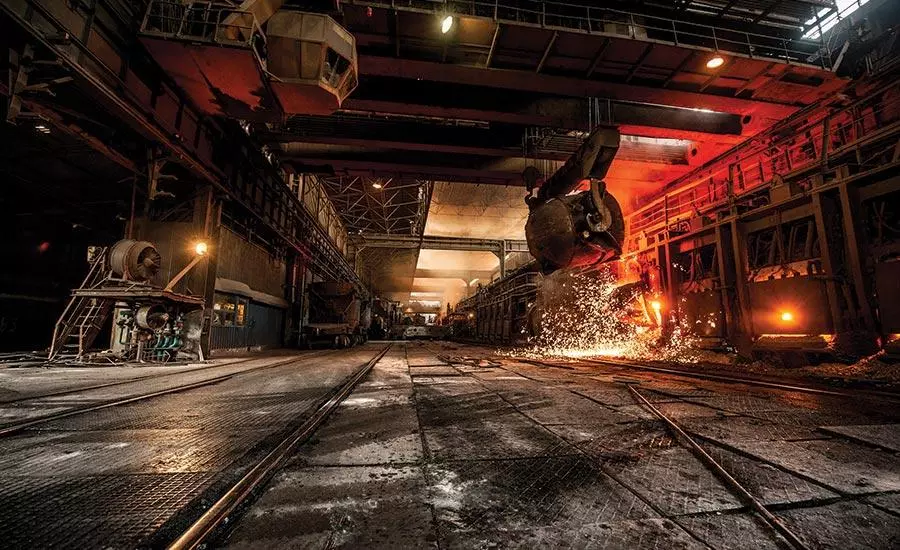World refractory market to expand on quality-driven consumption

The value of the global refractory market is projected to expand at an annual average of 3.4 percent through 2021
An important facet of the outlook is that the trend towards higher quality products is expected to continue, according to CW Research's Global Refractory Market Report. More tactically, 2017 is performing relatively well, with refractory consumption volumes increasing by four percent compared to 2016.
ÔÇ£The less-is-more trend, supported by innovation, is no doubt intensifying, Technology and new casting solutions are enabling a change in the usage from more brick to more monolithics, even in segments that traditionally predominantly have relied on brick refractories, such as cement,ÔÇØ underlined Robert Madeira, CW Research Managing Director and Head of Research.
The steel industry is the largest end-use sector of refractories and so even relatively small changes in steel output bring a disproportionally large impact on refractory demand. Despite the Chinese government's push to reduce excess industrial capacity (including steel output), steel production levels have been rising in 2017. Representing half of global refractory volumes, Chinese steel production unsurprisingly emerges as the main driver behind the favorable growth of the refractory market in 2017. On the other hand, refractory consumption of the aluminum and copper segments will remain stable, as these two industries traditionally have relatively low refractory consumption per ton of output, and volatility in output thus has a more moderate impact on total refractory consumption.
Along with China, Asian Pacific markets will account for the lion's share of refractories consumption. Volume-wise, Asia ex-China's surging cement and steel sectors will lead to an annual four-percent hike through 2021. The value of the regional market will expand by 4.5 percent on an annual average. The Middle East is projected to expand at an even faster rate.
Shift to quality
In 2017, magnesite-based refractories represent in excess of 40 percent of global consumption. This segment is followed by high alumina refractories with a 20 percent share, and by dolomite-based refractories, which account for fifteen percent of total consumption. Riding on the ÔÇÿflight to qualityÔÇÖ trend, magnesite-based consumption is projected to increase significantly in the next five years. Consequently, the share of lower quality refractories will shrink, with silica projected to account for only three percent of global consumption. Chromite-based refractories are slowly being pulled out of the market by major manufacturers, such as Vesuvius or Refratechnik, due to compatibility issues with other refractory chemicals in monolithic compositions.
An important implication of this trend is that sourcing raw materials has become a prominent challenge for refractory producers, placing a premium on purity. According to Raluca Cercel, Senior Consulting Analyst at CW Group: ÔÇ£as refractory materials turn more complex, delivering on an expanded set of needs, and most importantly, being developed to have a longer lifespan, pricing increases as well. That means both manufacturers and end users are transitioning from seeing refractory materials less as a commodity, and more as an investment.ÔÇØ
Towards castables
Another key trend facing manufacturers is the preference for castable refractories. Consequently, producers will need to adapt to more customized refractory solutions, and address the associated logistics and delivery challenges. The trend is not new, however; in 2017, CW Research estimates castable materials to account for 30 percent of refractory usage, twice the amount used in 2010.
By 2021, castable material usage will be even higher, enabled by new kiln-lining methods adopted by end-use segments, such as cement manufacturing. The surging usage of castables further stresses the importance of manufacturers creating refractories with increased lifespan, since replacement of castables is more complex and costly for end-users.
Industry consolidation
Competition, advanced technology and innovation needs and raw material sourcing challenges have provided the backdrop for refractory companies to bring together their know-how and resources. Such has been the case in RHI's acquisition of Magnesita in 2017, resulting in the creation of the largest refractories company in the world in terms of production capacity and natural resources. The move comes four years after RHI set up its first plant in Brazil, in an attempt to win over the majority of clients from the steel sector.
More consolidation is expected in the following years as China is restricting mining operations for several refractory manufacturers, which rely almost entirely on raw material supply from their Chinese mines.
Find out more here
